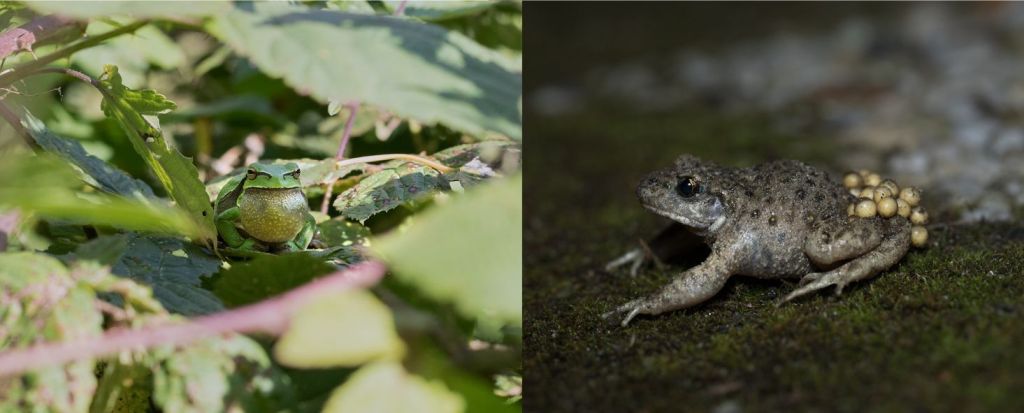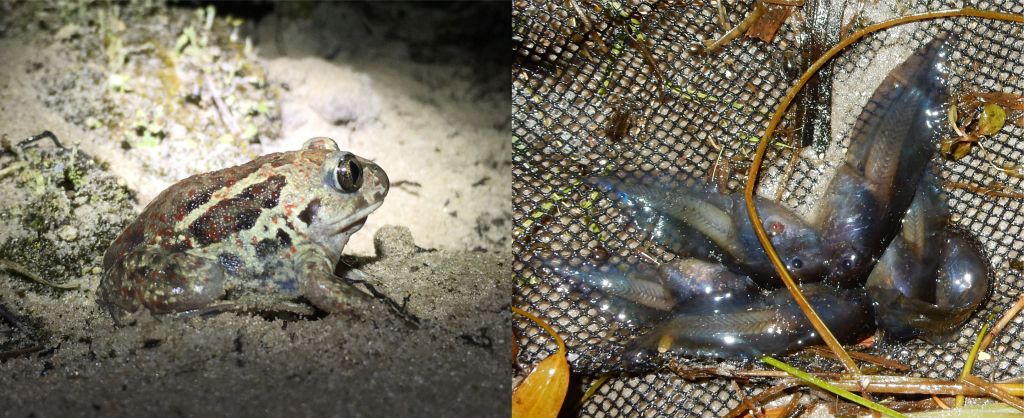The first crested newt I ever saw was in Meijendel, a dune area close to Leiden (where I studied biology at the time). This crested newt population is odd because it is completely isolated from the main distribution range. Could it be that these newts were introduced here?

There are other unusual amphibians in Meijendel too. Around the start of the 21st century tree frogs suddenly appeared. These have rapidly expanded their range and are now omnipresent. Less known is that a population of midwife toad has also become established here. Surely these guys must have been introduced!

I have always wondered where all these animals came from. When I set up my own lab in Leiden, I finally had the opportunity to take a closer look. Or rather, I had a large team of BSc students do the work!

The papers from their projects have now been published in Amphibia-Reptilia. We use mtDNA barcoding to determine the provenance of outlier populations in the Dutch coastal dunes. Because the species involved show geographical variation in mtDNA across their distribution ranges, we can link odd populations to the part of the range where their mtDNA naturally occurs.

For crested newts and midwife toads we unfortunately cannot say much about their origin, except that they derive from ‘somewhere in western Europe’, rather than from elsewhere in the range. The reason is that there is practically no genetic variation in western Europe, because this part of the range was colonized relatively recently, after the last glacial period subsided.

With the tree frogs it is a different story. These actually belong to three different species, two of which, the Italian and the eastern tree frog, are not even native to the Netherlands! Also spadefoot toads (not introduced in Meijendel but near Callantsoog) are highly distinct from the (threatened) native populations in the Netherlands. They derive from deep in central Europe. These examples showcase the power of mtDNA barcoding!

Reference: de Brouwer, J., Helder, B., France, J., de Visser, M.C., Struijk, R.P.J.H., Wielstra, B. (2023). An isolated crested newt population in Dutch coastal dunes: distribution relict or introduction? Amphibia- Reptilia 44(1): 19-26.
Reference: Vliegenthart, C., van de Vrede, M., den Boer, I., Gilbert, M.J., Lemmers, P., France, J., de Visser, M.C., Struijk, R.P.J.H., Wielstra, B. (2023). The limits of mtDNA analysis for determining the provenance of invasive species: a midwife toad example. Amphibia- Reptilia 44(1): 27-33.
Reference: Kuijt, M., Oskam, L., den Boer, I., Dufresnes, C., France, J., Gilbert, M.J., de Visser, M.C., Struijk, R.P.J.H., Wielstra, B. (2023). The introduction of three cryptic tree frog species in the Dutch coastal dunes challenges conservation paradigms. Amphibia- Reptilia 44(1): 1-10.
Reference: Koster, S., Prins, N., Dufresnes, C., France, J., de Visser, M.C., Struijk, R.P.J.H., Wielstra, B. (2023). The conservation paradox of an introduced population of a threatened species: spadefoot toads in the coastal dunes of the Netherlands. Amphibia- Reptilia 44(1) 11-18.

Pingback: Please send newts: citizen scientists help to determine the provenance of introduced Ichthyosaura | Wielstra Lab
Pingback: Crazily colored crested newts | Wielstra Lab